How Sensory Toys Can Positively Impact Autistic Children and Finding the Best Toys for Your Unique Child

Autism Spectrum Disorder (ASD) is a complex neurodevelopmental condition that affects sensory processing in many individuals. Sensory challenges can result in difficulty processing stimuli from the environment, leading to heightened sensitivity or avoidance of sensory experiences.
Sensory toys, designed specifically to cater to the unique sensory needs of autistic children, have emerged as valuable tools to support their development and overall well-being.
Understanding Sensory Processing in Autism
Children with autism often experience challenges in processing sensory information from their surroundings. These sensory issues can manifest as over-reactivity or under-reactivity to certain stimuli, which may impact their behavior, emotions, and communication skills. Sensory processing challenges can make everyday activities overwhelming and hinder social interactions and learning experiences.
Benefits of Sensory Toys for Autistic Children
Sensory toys play a pivotal role in addressing these challenges and offering a host of benefits to autistic children. By providing targeted sensory input, these toys aid in regulating sensory responses and reducing anxiety.
Children can use sensory toys to explore different textures, sounds, and visuals, helping them feel more comfortable in various situations.
Tactile Sensory Toys
Tactile sensory toys are designed to engage a child’s sense of touch. These toys include fidget spinners, textured balls, and squishy toys. The tactile feedback they provide helps children with autism develop fine motor skills, improve focus, and reduce stress and anxiety.
Here are our top 6 tactile sensory toys:
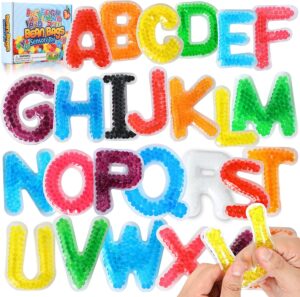
These ABC letters are a helpful educational toy while also serving as sensory toy that can be squeezed and tossed to help relieve stress and anxiety.
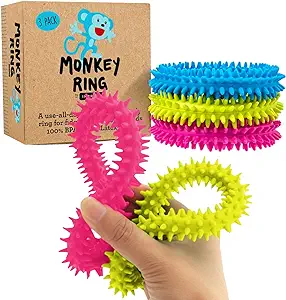
Original Monkey Spiky Sensory Ring / Bracelet
On the go bracelet for all day access to twist, squeeze and throw.

BUNMO Super Sensory Stretchy Strings
Stretchy strings with 6 different textures and tensions to help provide a sense of calm. Quiet and portable toy for on the go.
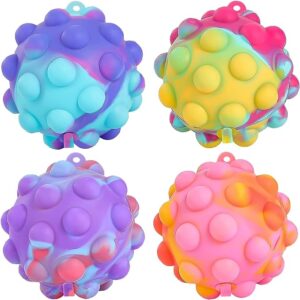
Squishy fidget stress ball.
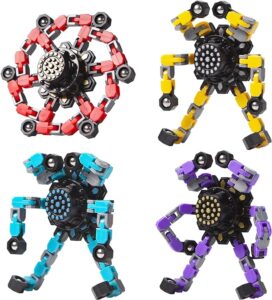
The fidget spinner has six chains with movable links that can create different shapes, like spinners, robots, and even phone holders.

These Pop Tubes are fun to play with and foster sensory learning. The tactile and auditory stimulation they provide encourages the development of fine motor skills, bilateral coordination, and fosters cause-and-effect STEM learning.
Visual Sensory Toys
Visual sensory toys are geared towards stimulating a child’s visual senses. Examples of such toys include light projectors, liquid timers, and sensory mirrors. By providing captivating visuals, these toys can enhance attention and encourage engagement in play and learning activities.
Here are our top 4 visual sensory toys:
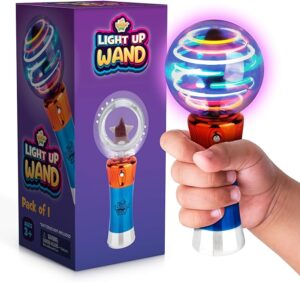
IPIDIPI TOYS Spinning Light Up Wand
A mesmerizing rotating light show designed to captivate the imagination and engage kids with autism for hours of sensory exploration and entertainment.
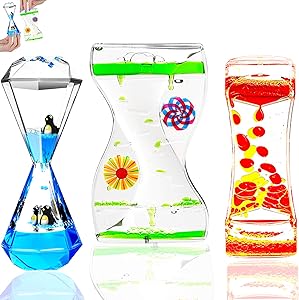
TKTM Types Liquid Motion Bubbler
This liquid motion timer toy, with its slow and rhythmic drops, offers a calming and soothing effect that is especially beneficial for children with sensory issues, aiding in anxiety relief, stress reduction, and combating boredom, making it an ideal choice for those on the autism spectrum.
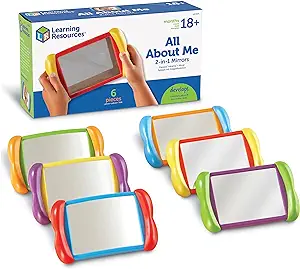
Learning Resources All About Me 2 in 1 Mirrors
By helping children with autism learn to recognize, understand, and embrace their feelings, they develop essential skills for forming friendships, excelling in teamwork, and leading a happier, healthier life!
SensoryMoon Sensory Night Light
Select from 8 lighting and projection modes, allowing the captivating moving motion and soothing nature sounds of the light to create a peaceful atmosphere. Perfect for providing a calming environment. Works as both a visual sensory toy as well as an auditory sensory toy.
Auditory Sensory Toys
Auditory sensory toys focus on sound and hearing experiences. Noise-canceling headphones, musical instruments, and sound machines are examples of such toys. These toys can help children with autism cope with noise sensitivity and encourage auditory exploration in a controlled environment.
Here are our top 3 Auditory sensory toys:

Rainmaker 8 inch Mini Rainstick
Create different sounds with this bead filled toy by shaking, turning or rolling it.

Beautiful light up tambourines create a visual and auditory music effect.
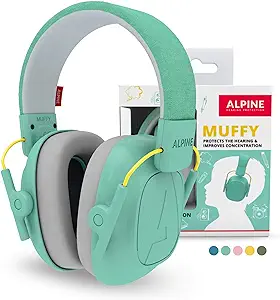
Alpine Muffy Noise Cancelling Headphones
These soft and comfortable noise cancelling headphones helps with sensory overload and other external triggers.
Proprioceptive and Vestibular Sensory Toys
Proprioceptive and vestibular sensory toys offer deep pressure and balance experiences. Swings, body socks, and therapy balls fall under this category. These toys can help children develop body awareness, improve coordination, and regulate their sensory systems.
Here are our top 4 sensory toys in this category:
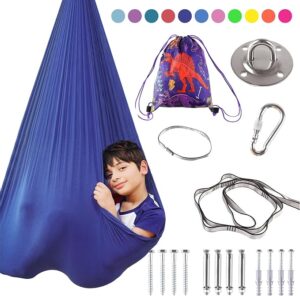
The Sensory Swing offers a quiet, private space for your child to have fun and release excess energy, promoting calmness and relieving anxiety while enhancing coordination and balance through various activities. It provides continuous sensory input, allowing them to lie down, rock, spin, swing, etc.
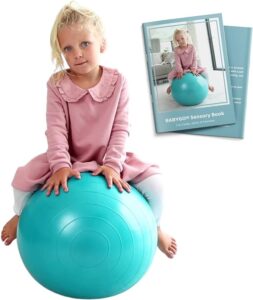
BABYGO® Sensory Peanut Ball for Kids
Utilize the peanut ball to promote balance, coordination, motor skills, concentration, focus, and tactile awareness.
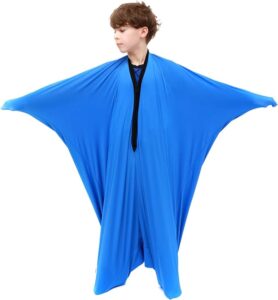
SANHO Yopo Dynamic Movement Sensory Sox
This sensory sock enhances self-calming abilities, improves balance, increases body and spatial awareness, and boosts movement creativity.
Choosing the Right Sensory Toy for Your Autistic Child
When selecting sensory toys for an autistic child, it’s essential to consider their individual sensory preferences and needs. Ensuring age-appropriateness and safety is crucial. Consulting with occupational therapists or experts can provide valuable insights and personalized recommendations. Trying out different toys allows parents and caregivers to identify the most effective ones for the child.
Using Sensory Toys for Autistic Children in Different Settings
Incorporating sensory toys into various settings enhances their benefits. At home, integrating sensory toys into daily routines can create a more sensory-friendly environment, promoting exploration and comfort.
Collaborating with teachers and educators to incorporate sensory toys in the classroom can help support learning and participation for children with autism. Sensory toys can also be utilized effectively in therapy and clinical settings to complement interventions and therapy goals.
Sensory toys are invaluable tools in supporting autistic children in their sensory development journey. By addressing sensory processing challenges and providing enriching experiences, these toys empower children to explore the world around them with greater confidence and ease.
Emphasizing the importance of continued research and innovation in this area, we can further unlock the potential of sensory toys in positively impacting the lives of autistic children.